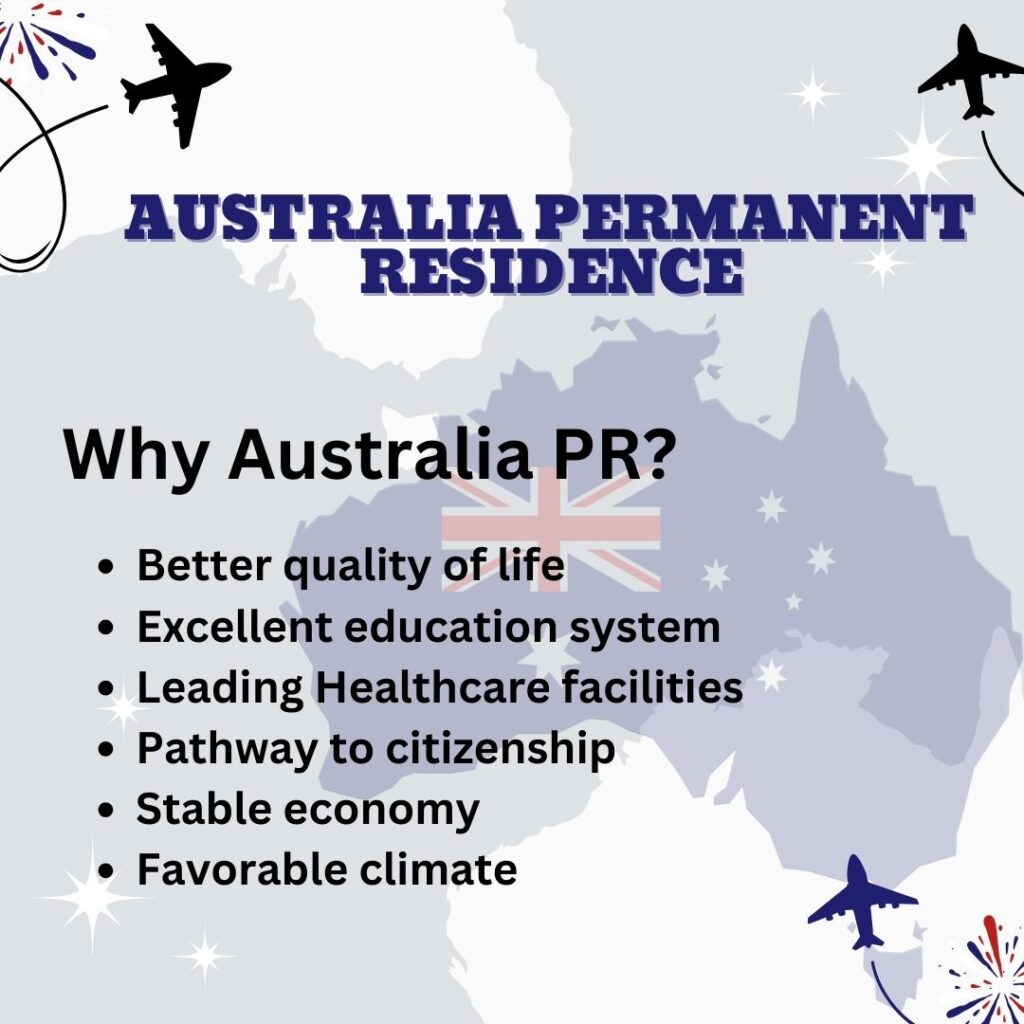Australia offers a range of pathways to permanent residence, making it an attractive destination for people worldwide looking to build a new life. Achieving Australia permanent residence allows individuals to live, work, and study in Australia indefinitely, with access to many of the same benefits as Australian citizens. This article explores the various routes to permanent residence, the benefits it offers, and the key steps involved in the application process.
Pathways to Australia Permanent Residence
There are several pathways to obtaining Australia permanent residence, each tailored to different circumstances and skill sets:
- Skilled Migration Visas: These visas are designed for individuals with skills in demand in the Australian labor market. The most common options include the Skilled Independent Visa (Subclass 189), Skilled Nominated Visa (Subclass 190), and Skilled Work Regional Visa (Subclass 491). Applicants are typically assessed based on a points system that considers age, education, work experience, and English language proficiency.
- Family-Sponsored Visas: Family reunification is a key aspect of Australia’s immigration policy. Family-sponsored visas, such as the Partner Visa (Subclass 801) and the Parent Visa (Subclass 103), allow Australian citizens, permanent residents, and eligible New Zealand citizens to sponsor their relatives for permanent residence.
- Employer-Sponsored Visas: For those with a job offer from an Australian employer, the Employer Nomination Scheme (Subclass 186) and the Regional Sponsored Migration Scheme (Subclass 187) provide pathways to permanent residence. These visas require the employer to nominate the applicant for a specific position.
- Business and Investment Visas: Australia encourages entrepreneurs and investors to contribute to the economy through the Business Innovation and Investment Visa (Subclass 188) and the Business Talent Visa (Subclass 132). These visas offer permanent residence to individuals who invest in or establish businesses in Australia.
- Humanitarian and Refugee Visas: Australia also offers permanent residence to individuals in need of protection through its humanitarian program. Visas such as the Refugee Visa (Subclass 200) and Global Special Humanitarian Visa (Subclass 202) are designed for those fleeing persecution or significant harm.
Benefits of Australia Permanent Residence
Obtaining Australia PR comes with numerous benefits:
- Indefinite Stay: Permanent residents can live in Australia indefinitely and travel freely in and out of the country.
- Work and Study: Permanent residents have the right to work and study anywhere in Australia, giving them access to a wide range of employment and educational opportunities.
- Healthcare Access: Permanent residents are eligible for Medicare, Australia’s public healthcare system, which provides free or subsidized medical services.
- Social Security Benefits: After a qualifying period, permanent residents may be eligible for social security benefits, including unemployment benefits, family assistance, and pensions.
- Pathway to Citizenship: Permanent residence is the first step toward Australian citizenship. After meeting the residency requirements, permanent residents can apply for citizenship and enjoy all the rights and privileges of Australian citizens, including the right to vote.
- Sponsor Family Members: Permanent residents can sponsor eligible family members for permanent residence, helping them reunite in Australia.
Application Process for Australia Permanent Residence
The process of applying for Australia permanent residence generally involves the following steps:
- Determine Eligibility: The first step is to determine which visa category best suits your circumstances. This may involve assessing your skills, qualifications, and personal situation.
- Lodge an Expression of Interest (EOI): For skilled migration visas, you must submit an EOI through the SkillSelect system. This step allows you to be considered for an invitation to apply for a visa.
- Receive an Invitation to Apply: If your EOI is selected, you will receive an invitation to apply for a visa. For employer-sponsored visas, your employer must lodge a nomination application.
- Submit a Visa Application: Once invited, you must submit a visa application along with the required documentation, such as identity documents, skills assessments, and health checks.
- Wait for Processing: Visa processing times can vary depending on the visa category and your personal circumstances. It is important to ensure all documentation is complete to avoid delays.
- Receive a Decision: If your application is successful, you will be granted permanent residence in Australia.
Conclusion
Australia permanent residence offers a wealth of opportunities for those seeking a new life in a dynamic, diverse, and prosperous country. Whether through skilled migration, family sponsorship, or investment, achieving permanent residence in Australia is a significant step toward building a secure and fulfilling future. With access to work, education, healthcare, and social benefits, permanent residents can fully participate in and contribute to Australian society, enjoying a high quality of life and the potential to eventually become Australian citizens.
